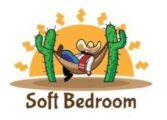A flat surface is crucial for supporting a mattress without slats or holes. Bunkie boards and plywood work here. If you’re considering using plywood instead of a bunkie board, there are a few things to consider.
Bunkie boards replace box springs with solid, flat mattress support bases. Bunkie boards are great for those who desire a lower mattress profile or have limited vertical space because they are often little more than 4 inches thick, unlike box springs.
They level your mattress, which is vital for memory foam and latex mattresses that might be damaged by slatted support systems with gaps. Bunkie boards also assist maintain warranties on such mattresses.
Plywood, comprised of wood veneer cemented together, is versatile. Its hardness and softness vary. Due to its robustness, lightweight, and affordability, plywood is employed in building and DIY projects. It can replace a bunkie board, but there are essential considerations.
Table of Contents
Understanding Bunkie Boards
Bunkie boards and their benefits should be considered while choosing mattress support. A flat, durable bunkie board supports your mattress. Bunkie boards, unlike box springs, are flat pieces of material.
Bunkie boards level your mattress. Memory foam and latex mattresses benefit from a sturdy foundation. Consistent support keeps these mattresses in shape and comfortable.
Uneven pressure distribution from slatted support systems may cause premature mattress sagging or injury. Bunkie boards provide a stable and continuous mattress surface.
Bunkie boards are low-profile, another benefit. Bunkie boards usually add less than 4 inches to your mattress. This helps those who desire a lower bed height or have vertical space constraints. A bunkie board may support your mattress while looking sleek and minimalist.
Bunkie boards are also made for aesthetics. Many versions have fabric covers for aesthetics. If the bunkie board will be visible from underneath a bunk bed or loft bed, this is very critical. The fabric covering improves attractiveness and protects the board from chips and snags that could damage your bedding or mattress.
Plywood: An Alternative Option
Plywood is another mattress support option besides bunkie boards. Wood veneer layers piled and cemented together make plywood a flexible building material. Its strength, durability, and affordability make it a good mattress base material.
Plywood is sturdy and stable. Plywood can support a mattress like a bunkie board. To support your mattress, choose the right plywood thickness and quality. For strength and stability, use plywood at least 1 inch thick.
Using plywood instead of a bunkie board requires some consideration. Plywood may look less appealing than fabric-covered bunkie boards. Plywood can be polished, but it lacks the cloth covering that makes bunkie boards attractive. However, plywood with a better exterior layer can look better.
Durability matters too. Bunkie boards are made to support a mattress, assuring durability. High-quality plywood is needed to endure weight and regular use without warping or bending.
Plywood and bunkie boards are commonly chosen based on cost. Budget-friendly plywood is cheaper than pre-made bunkie planks. Plywood is more economical for DIY projects, depending on thickness and quality.
Plywood allows DIY projects. Plywood bunkie boards can be made with the correct tools and knowledge. This lets you change the board size and thickness to fit your mattress and bed frame. DIY projects give you control over design and construction and are enjoyable and gratifying.
Pros and Cons of Using Plywood Instead of a Bunkie Board
When deciding between using plywood or a bunkie board as a mattress support, it’s essential to weigh the pros and cons of each option. Consider the following factors to make an informed decision:
Pros:
- Cost: Plywood is generally more affordable than pre-made bunkie boards. If you’re on a tight budget, using plywood can help you save money without compromising on mattress support.
- DIY Potential: Using plywood allows you to engage in a DIY project and create a custom bunkie board that fits your specific mattress and bed frame. This hands-on approach can be a fun and rewarding experience, giving you control over the design and construction process.
- Strength and Durability: Plywood, especially when of good quality and thickness, can provide sufficient strength and durability to support your mattress effectively. It can withstand the weight of the mattress and regular use without warping or bending over time.
Cons:
- Aesthetics: One drawback of using plywood instead of a bunkie board is the lack of a fabric covering. Plywood may not offer the same visual appeal as fabric-covered bunkie boards. However, selecting higher quality plywood with a smoother finish can help improve the appearance.
- Limited Options: When using plywood, you may have fewer options for customization compared to pre-made bunkie boards. Bunkie boards often come in various sizes, thicknesses, and fabric coverings, catering to different mattress and bed frame requirements.
- Potential for Damage: Plywood, especially if of lower quality, may have rough edges or splinters that could snag on your bedding or mattress. It’s important to choose plywood with a smooth finish and handle it carefully during the construction process to minimize the risk of damage.
- Time and Effort: Creating a DIY bunkie board with plywood requires time, effort, and access to the necessary tools. If you prefer a ready-made solution, purchasing a bunkie board might be a more convenient option.
Making a DIY Bunkie Board Out of Plywood
If you’ve decided to use plywood as a mattress support and embark on a DIY project, here’s a step-by-step guide to help you create your own bunkie board:
Materials needed:
- One plywood sheet (at least 1 inch thick)
- Medium-grit sandpaper
- Quilted upholstery fabric
- Upholstery spray adhesive
- Heavy-duty staple gun
- Optional: circular saw or electric sander
Step 1: Measure the mattress size: Start by measuring the dimensions of your mattress to determine the size of the bunkie board you need. Subtract about an inch from the length and width to ensure it fits snugly into your bed frame. Remember to consider the thickness of the upholstery fabric when determining the size.
Step 2: Cut the plywood: Using a circular saw or seeking assistance at a local hardware store, cut the plywood sheet to the desired dimensions determined in Step 1. Aim for accuracy to ensure a proper fit.
Step 3: Sand down the rough edges: Use medium-grit sandpaper to smooth out any rough edges or irregularities on the cut edges of the plywood. This step will help create a sleek and polished finish while preventing wear on your bedding and mattress.
Step 4: Cut the upholstery fabric: Measure and cut the quilted upholstery fabric to match the size of the plywood board. Cut two pieces—one for the top and one for the bottom. Ensure the top piece is a few inches longer on each side to allow for wrapping around the plywood.
Step 5: Apply upholstery adhesive: Clean both sides of the plywood sheet to ensure proper adhesion. Then, spray one side of the plywood with upholstery adhesive. Carefully place the corresponding upholstery fabric piece onto the adhesive-covered side, ensuring a smooth and wrinkle-free application. Repeat the process for the other side of the plywood.
Step 6: Staple the fabric in place: Flip the board bottom side up and fold the excess fabric from the top so that it is flush with the board. Pull the fabric taut and use a heavy-duty staple gun to secure the folded fabric in place. Repeat this process on all sides of the plywood board. While the corners don’t have to be perfect, taking care during stapling will enhance the overall appearance.
By following these instructions, you can construct a plywood bunkie board that will serve as a sturdy and unique base for your bed. You can find additional in-depth courses and videos online to use as a reference, but this is a good starting point.
When using any kind of tool, it’s important to take precautions and avoid injury. With time and effort, you can build a bunkie board that not only supports your mattress but also serves as a unique decorative element in your bedroom.
Conclusion
A pleasant and supportive mattress requires the correct support. When choosing between plywood and a bunkie board, assess the advantages and cons.
Plywood is a cheaper, stronger, and DIY-friendly bunkie board option. When employing thick, high-quality plywood, it gives a stable mattress surface. It may be less attractive than fabric-covered bunkie boards and take longer to build.
Bunkie boards, on the other hand, are aesthetically designed and ready-made. They support memory foam and latex mattresses and look good. Bunkie boards available in different sizes and fabrics for different bed arrangements.
Consider price, DIY interest, appearance, and mattress support while choosing. Making a plywood bunkie board is a fun DIY project for those on a budget. If aesthetics and convenience matter, a pre-made bunkie board may be better.
Plywood or bunkie board depends on your needs, tastes, and skills. By considering these characteristics, you may choose a mattress support that will help you sleep well.
This article should have illuminated bunkie boards and plywood as mattress support choices. May your plywood bunkie board or pre-made bunkie board provide many nights of restful slumber.

